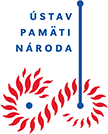Martin Garek: State Catholic Action in Orava Region – Revolts and Riots in 1949
Communist power perceived the Catholic Church as its main ideological internal enemy. Since the February coup d'etat in 1948, there were attempts to get the Catholic church be subordinated to the political leadership in Czechoslovakia. Observing the resistance of the episcopacy and the Holy See against its efforts, the Communist power gradually started to use more radical interventions against the Catholic Church. The organisation called the Catholic Action was used to separate people, above all from higher church dignitaries. That established organisation was taken over and used for purposes of the political power. Catholic Action represented subversive activities of Communist leaders striving to separate church goers from their priests and the church hierarchy, and to establish a 'national church'. In 1949, the so-called Catholic Action led to number of riots, representing most significant form of resistance against the Communist power. Some of those riots were even classified as revolts. Orava region was a specific case to a certain extent, as Communist officials themselves labeled local people as bigoted, protesting against communist ideas, being loyal to their priests and their Bishop Ján Vojtaššák. Riots connected to that so-called Catholic Action started in May 1949 in Dolný Kubín and Trstená, and they went on also in other parishes to late autumn. It was clear that people in Orava region mostly trusted their priests and acted up to their religious beliefs. Despite of punishments administered by the Communists, church goers were ready to fight for their beliefs and to maintain it as it was requested by the church hierarchy in Czechoslovakia and instructions from Vatican. It was the attitude of people that led to the situation that the Communist power abandoned the so-called Catholic Action in Czechoslovakia and started to use other forms of persecuting priests and church goers.

Updated at: 15.05.2020
Print Tweet